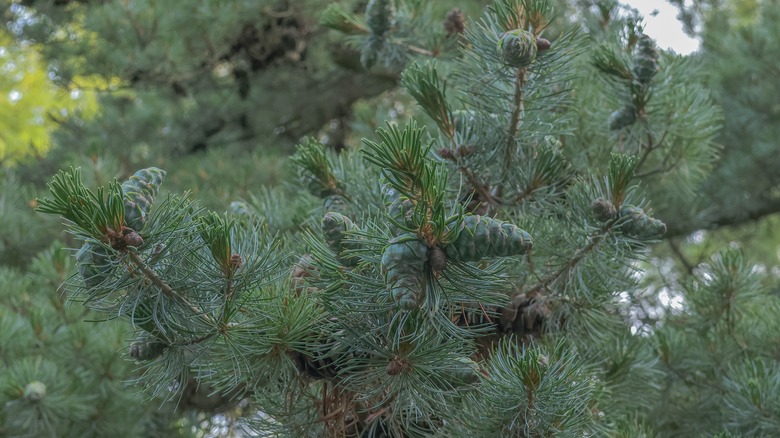The Hardy Pine Tree With A Unique Adaptation That Makes It Resilient To Snow And Ice
Tired of trimming every tree in your yard before a snow storm hits? Normally this practice is the only way to avoid broken branches from heavy snow loads, but one species of pine tree easily withstands snow, ice, and wind without breaking: the limber pine (Pinus flexilis). Also known as the Rocky Mountain white pine, limber pines are native to the Rocky Mountains in the western U.S. and Canada. They've been an important part of that landscape for years — the oldest specimens are over a thousand years old! — and younger limber pines make a beautiful feature in home landscapes, too, thanks to their blue-green needles and gray bark.
Limber pines are named for the adaptation that makes them one of the most unique trees found in the United States. Their branches are so limber that they can bend double without breaking; younger branches can even be tied into knots. Because of this flexibility, they're less prone to storm damage than other trees. They're able to bend rather than break under snow loads and strong winds. If you're interested in planting a limber pine tree in your yard, here's what to know.
How to grow a limber pine
Limber pines are long-lived and slow-growing, taking a couple hundred years to reach maturity in their native habitats. Some smaller cultivated varieties are available for landscaping, such as the Vanderwolf's Pyramid limber pine, which averages 20 to 25 feet tall and grows in USDA zones 4 through 7. These trees can be used as an accent tree or to create privacy in your yard.
It's best to plant in spring or early fall in an area with full sun, well-draining soil, and room to grow away from power lines or buildings. Choose the location carefully — with a large taproot, limber pines are difficult to transfer after they're established. Dig a large hole about twice the width of the root ball, and place the plant so that the top of the root ball is level with the surface. Then fill with soil and water thoroughly. Aside from pruning them into the desired shape when they're young, these pines require minimal maintenance. Established limber pines are resistant to dry soil, pests, and cold.

